During The Wellness Project, one of my hardest challenges was deciding what food rules to live by. And I quickly learned that devising those healthy hedonist parameters for the land was a lot easier than doing so for the sea.
Choosing seafood that is both healthy for you and also poses limited environmental risk is a tricky business–even more so than sourcing sustainable meat. For starters, you have to weigh a lot of components: mercury, omega 3 ratios, the varying quality of farming practices, the scarcity of what’s in the wild, and simply knowing how the hell to cook the species you’ve never heard of.
I’ve been lucky to get a lot of practice trouble shooting the latter during my summers on Martha’s Vineyard. And since August is probably the month when you’re most likely to step outside your seafood comfort zone, I thought it would be an opportune time to take on a #summerseafoodchallenge and dedicate a few weeks on the blog to talking about the best fish to eat and how to cook them.
A few weeks ago, when I returned to my favorite island for a few weeks of frying up flounder and broiling bluefish, I had the fortuitous pleasure of hearing Paul Greenberg give a talk on this very subject. The best-selling author of Four Fish and American Catch, has dedicated his career to unpacking the layers of commerce, infrastructure, and biodiversity that have created some pretty funky imbalances in the American seafood system.
For starters, 90 percent of the seafood we eat in this country is imported, while much of the catch from our oceans is sent overseas. Sounds super sustainable, right? To add to that not-so fun fact: many of the fish we export are among the healthiest.
So why do we readily give those nutrient-dense options away? According to Greenberg, a central issue is that we don’t want them.
“Americans are looking for a dough delivery system,” he told the crowd. If you can fry it, we’ll eat it. And most of the oily, fishy fish–those that are high in omega 3 fatty acids–are not the best vehicles for batter and breading.
As a food blogger, I’ve become intimately acquainted with the art of “giving the people what they want.” So the statistics that Greenberg relayed—-that shrimp, salmon and tuna represent more than half of all the seafood we eat—-didn’t surprise me. I know that’s what you’re cooking on a regular basis, and to feed your cravings, I’ve tried to provide recipes for those three species more than any other.
But this month, I’m hoping to expand your horizons. Because the number one way to eat healthier, more sustainable seafood is to seek out more diversity on your plate. So buckle up and get ready for some recipes this month that will help you think outside the shake-n-bake shrimp box.
Your mission is this: pledge to buy one variety of seafood that you’ve never cooked before. If you’re out at a restaurant, skip the salmon, tuna and shrimp in favor of another species. There are more fish in the sea, guys!
To kick things off, I’ve put together a definitive guide to shopping for better seafood, including a list of the best and worst buys, and more importantly, what to do with them once you’re back to your kitchen.
Have any local varieties that you need recipes for? Let me know in the comments section!
From one healthy, seafood loving hedonist to another,
Xoxo
Phoebe
HARD & FAST RULES FOR THE SEAFOOD AISLE
Unfortunately, you’ll have a harder time finding a more diverse array of seafood at your regular grocery store. It’s easier for corporations to deal with other corporations than small local fishermen. When possible, find an independent fish shop or stand at the farmer’s market that sells more than your standard trio of salmon, shrimp and tuna. But even then, keep the following tips in mind:
1. Give it the sniff test. It’s true that Americans don’t like overly fishy fish. But even varieties that taste more like the sea shouldn’t necessarily smell overly fishy in their raw state. If the seafood smells rank, don’t buy it. Because if it smells that way, guess what? It’s going to taste that way too.
2. Look for “previously frozen.” A lot of the time, signs at the seafood counter will indicate whether something has been previously frozen. If so, check the freezer aisle to see if you can buy the same item there. I know it seems counter intuitive that something in the freezer aisle would be “fresher” than the same product at the counter. But defrosting it yourself will in fact ensure that it is.
3. Buy what’s local. Because you want your fish to be delicious first and foremost, it’s always best to buy local. Flash freezing seafood (like most wild salmon) preserves the integrity to some extent, but it also leaves a lot of room for human error as it makes its way from Alaska to your plate. As Greenberg uncovered, it’s also often shipped overseas for processing before being returned for sale in this country (not-so sustainable). With seafood, even more so than produce, you can really taste the difference when something is plucked straight from the ocean that day. Ask your fishmonger what’s fresh and local. If you’re concerned about species that may be overfished, you can cross-reference your choice on SeafoodWatch.org, or see my specific guidelines below.
4. Farmed can be fine, depending on where it’s from. If you’re buying farmed seafood, it’s best to source it from either Europe (Iceland, Norway), the US or Canada—places which ranked highest in terms of compliance with the UN code of conduct for fisheries. Farming practices in South America and Asia, where the majority of farmed seafood comes from, have exhibited some pretty shady practices that are bad for the environment and your body. Buy organic when possible to avoid hormones and GMO corn found in commercial feed. See below for some specific species that are generally ok to buy farmed, and others that you should always be skeptical of.
5. Be mindful of mercury. Yes, with wild fish you get the benefits of a natural diet—free of pig feces AND corn—but you also run the risk of consuming other toxic substances as a result of industrial waste seeping into our oceans. The biggest red flag toxin is mercury, which is found in larger deep-water fish, and is known to cause a host of inflammatory conditions in the body. (It’s also been linked to autoimmune disease).
6. Ask questions. The seafood counter can be intimidating. If you’re shopping from a local market, chances are you’ve only heard of a handful of fish in the case. Talk to the guy (or gal!) behind the counter and let them help you expand your horizons. They can point you to some lesser known species that are a lot cheaper than the “name brand” salmon and yellowfin tuna you’re used to. They’ll also have great cooking advice, since they usually go home with the catch that no one else wants.
THE BEST FISH TO EAT: HEALTHIEST SEAFOOD WITH MINIMAL ENVIRONMENTAL IMPACT
SeafoodWatch and EWG are both great resources for lists of the best fish to eat. The former takes into account sustainability, and the latter toxicity. You have to cross-reference them in order to get a clear picture for both environmental impact and health…which is exactly what I’ve done. Below are some of the general themes. I tried to include some of the more well known species that are popular on both coasts. I haven’t included each and every variety, so make sure to pop by these resources if you’re unsure of where your choice fall. Or simply drop me a line in the comments section!
Oysters, Clams, Mussels, Scallops: Farmed Filter Feeders
The best species—those with low mercury, high levels of beneficial nutrients, and minimal environmental impact—are mollusks like clams, mussels, oysters, and scallops. While most of the above are farmed, the process actually improves the areas of ocean they’re introduced to.
These bivalves are actually “filter feeders,” meaning they eat by way of straining small food particles from the water. In recent years, there have been several innovative proposals for reintroducing oyster colonies to particularly polluted areas because of their filtration powers.
Shellfish also happen to be very high in some essential nutrients like omega-3 fatty acids, zinc, selenium, iron and B12, and low in saturated fat.
Sardines, Anchovies, Herring: Small Oily Fish
The smaller the fish, the less likely it is to be an incubator for mercury. Anchovies and sardines get a bad rap for being the bachelor food of our father’s era. But they’re actually packed with healthy fats and nutrients. And tins of anchovies and sardines remain as cheap and readily available as they were 40 years ago.
To add some extra protein without making fish the main event, try adding anchovies to your vinaigrette (like in this recipe), or to your tomato sauce. Sardines, which are slightly larger, are also great broiled and folded into pasta, or pressed inside a sandwich.
You’ll find a lot of recipes for herring from Scandinavian sources, where it’s a national delicacy. But when in doubt, use it as you would a sardine.
Atlantic Mackerel: High Omega-3, Low Mercury
These darker fish tend to be plentiful in Northeast waters, and therefore, very affordable at the fish counter. Many people get turned off by their grey flesh, but once cooked they mellow into very delicious fillets. Plus, their oily complexion, full of Omega-3’s is also very good for your health.
Pollack, Hake, Catfish (from US), Flounder, Haddock, Sole: Low Mercury, Wild White Fish
These varieties may not pack in as many omega 3-‘s as their oily counterparts above, but they’re the type of mild white fish that’s most appealing to the American palette. You can cook these guys in a variety of ways from stews, to packets, to ceviches. See below for more ideas.
Note that in some areas, flounder and haddock are overfished using environmentally destructive methods. Use the state-by-state guides from SeafoodWatch to determine if they’re sustainable in your hometown.
Sockeye, Coho or King Salmon: Pacific, Wild, High Omega-3
Many nutritionists and physicians will tell you to go wild. Like grass-fed cows, fish feeding in their natural ocean environment pack a bigger nutritional punch. With salmon, you can get a sense of its nutrient density from the color alone. Atlantic salmon, which is effectively extinct in the wild, is a well-worn Nantucket red versus wild Alaskan salmon’s glistening scarlet. And often that muted pink color is achieved through dyes. Without the algae in a typical wild diet, farmed salmon’s flesh often develops as a dingy grey color.
Though you’ll pay a premium, if you can go wild, it’s the healthier choice. Sockeye and Coho salmon are seasonal and can be fairly affordable during their peaks. Buy them on sale and freeze individual fillets for future use.
WHAT TO LIMIT
US or EU Farmed Atlantic Salmon, Arctic Char, Branzino, Catfish, Trout: Responsible Mariculture
If we want to eat more seafood at an affordable price, farmed fish is not just here to stay, it is a necessity to meet the rising demand. As our oceans become ever more polluted, and our seafood populations begin to diminish due to over-fishing, mariculture doesn’t seem quite as bad from a health and sustainability standpoint. The problem, similar to the problem with factory-farmed meat, lies in the transparency of these practices. Stick to farmed seafood from the US and EU.
Salmon and Arctic Char are among the healthiest from this list in terms of Omega-3’s. The reason why I’ve put them on the “limited” list is because of sustainability. While farming practices help protect specific species from overfishing, it’s still not the most efficient use of marine life when you consider how many more pounds of fish is needed to feed farmed salmon versus wild. In terms of sustainability, farmed fish is still a much better choice than beef. But farming practices still throw off wild populations by pruning the oceans of “foraged fish” needed for feed.
Because farmed salmon are given ground up fish feed that is designed to be high in fish oil, they also end up being higher in Omega-6 fatty acids, and worse, PCB’s.
Atlantic Cod: Low Omega-3’s + Overfished
New England cod is still overfished and at risk for extinction. It’s also not necessarily as healthy as other more omega-3 heavy varieties like farmed salmon. Best to take a break from it to allow the wild populations to come back.
Halibut, Striped Bass, Mahi Mahi, Snapper, Monkfish, Lobster, Bluefish: Mercury Adds Up
These slightly larger fish are in medium mercury territory. The recommendation is to limit consumption to six servings or less per month. Considering these varieties fall outside the salmon-tuna-shrimp magic trio, I doubt many of you will have an issue with following this quantity guideline.
Note that bluefish is also one of the best sources of Omega-3’s. That doesn’t offset the heavy metals, but it is one of the healthier choices of these higher mercury fish.
WHAT NOT TO EAT
Tuna, Swordfish, King Mackerel, Marlin, Tilefish, Orange Roughy and Shark: High Mercury Fish
According to Susan Blum, one of the most well-studied toxins in relation to autoimmune disease is mercury, which occurs at high levels in larger wild fish because their diet is primarily other fish.
Heavy metals accumulate overtime, which is why it’s important to limit your consumption on a weekly basis.
For Hashimotos sufferers, mercury can inhibit essential enzyme production that helps our body convert thyroid T4 hormones into active T3. Since our thyroid only makes 10 percent of the T3 our body needs, that conversion is essential for our endocrine and metabolic systems to function properly.
I do, however, have a healthy hedonist tip for all your sushi addicts: add some cilantro to your meal! It’s a chelating agent that will help your body better remove the toxin.
Non-US or EU Farmed Shrimp, Salmon, Tilapia, Catfish: Anything That’s From Asia or South America
In theory, at least farmed seafood eliminates the mercury issue. But recent reports have revealed that what’s used in farmed waters may be even worse.
From 2005 to 2010, a quarter of food-borne illnesses from imported commodities involved seafood, more than any other category. In China, The New York Times found shrimp and tilapia being raised in industrial waste water that contained high levels of pesticides and other agricultural runoff. In 2012, Bloomberg reported scenes of seafood on Asian farms standing in unchilled rooms covered in flies, and in some cases, the fish were even fed a diet of pig feces.
If you see a farmed sign at the seafood counter make sure to ask where it originated from, and avoid varieties from Asian or South America. Remember first and foremost, eat American seafood!
COOKING TECHNIQUES TO THINK OUTSIDE THE SEAFOOD BOX
Fish and shellfish are much more versatile than you think. Here are some general guidelines below that you can use again and again, no matter what species you bring home.
Papillote
How to do it: Cook fish in parchment paper packets in a 400 degree oven for 10 minutes.
Species that work best: Any medium thickness whitefish or salmon fillet.
Recipes: Halibut Packets with Zucchini and Tahini Sauce (sub any white fish), Almond-Crusted Salmon en Papilliote, Brazilian-Style Moqueca Packets
Crispy, Pan-Fried Fillets
How to do it: Dredge the fish in flour. For a gluten-free version, my favorite is millet flour or cornmeal. White rice will also work.
Species that work best: Any very thin white fish fillet like sole, snapper, flounder, or catfish.
Recipes: Crispy Flounder with Bok Choy and Coconut Rice, Cornmeal-Crusted Catfish with Dirty Rice
Soup or Stew
How to do it: Create a flavorful broth simmered gently with veggies. Cut up your seafood into large chunks (2-inch cubes), and simmer in the sauce during the last 10 minutes of cooking.
Species that work best: Thick, semi-firm fish fillets like haddock, hake, pollack, halibut, mahi mahi, or Pacific cod.
Recipes: Marmitako with Potatoes and Tomatoes (Sub one of the above for the tuna), Thai Pumpkin Curry, Summer Corn Chowder (sub one of the above for the shrimp)
Baked Whole
How to do it: Have the fishmonger clean and butterfly the fish so that the cavity is clean. Once home, stuff it with herbs, lemon wedges, and any other sauce or condiment you want to use. Tie the fish together with kitchen twine so that the add-ins remain intact. Bake at 400 degrees until tender, 10 minutes.
Species that work best: smaller fish like arctic char, trout, fresh sardines, branzino
Recipes: Whole Roasted Trout
Paella
How to do it: Follow any standard paella recipe using a lidded saucepan and add in the shellfish at the end. Place the lid on and steam until opened.
Species that work best: mussels, clams, scallops (sear first, then top the finished paella with them)
Recipes: Easy Quinoa Paella with Clams
Seared
How to do it: Place a large heavy-bottomed skillet over high heat. Add oil and perhaps a pat of butter. Carefully add the fish (flesh-side down) or seafood. Cook without moving until a nice browned crust forms, about 3 minutes. Flip and cook for a minute or so on the other side until cooked through.
Species that work best: thicker firm fish fillets like salmon, bass, mahi mahi; or scallops.
Recipes: Seared Salmon and Quinoa Bowls, Seared Scallops with Carrot Romesco
Broiled
How to do it: Preheat the broiler. Top the fish with whatever add-ins or condiments you like. Place under the broiler for 3 to 5 minutes, until cooked through and browned in spots.
Species that work best: Thicker firm fish like striped bass, bluefish, salmon; or oysters; this is a good technique for feeding a crowd. Try using a whole side of fish instead of fillets like the above.
Recipes: Broiled Provencal Striped Bass
Ceviche or Raw
How to do it: Cut the raw fish into small chunks. Marinate in an acid-heavy citrus mixture for a few hours until tender.
Species that work best: salmon, striped bass – really anything sushi grade or very fresh.
Recipes: Striped Bass Ceviche Tacos, Salmon Poke Bowls
There are many more techniques that I didn’t get into – but this should give you a good start! Let me know if you have any questions in the comments. It’s a complicated dance creating your own healthy hedonist rules around seafood, but I hope that this gives you some insight into how I balance the various priorities.
And for more great seafood recipes from the archives, click here!
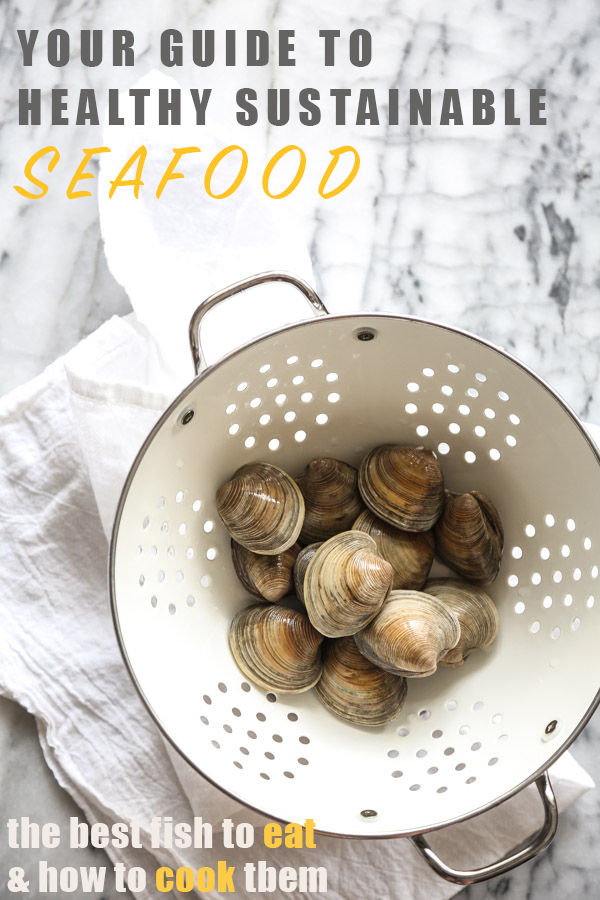

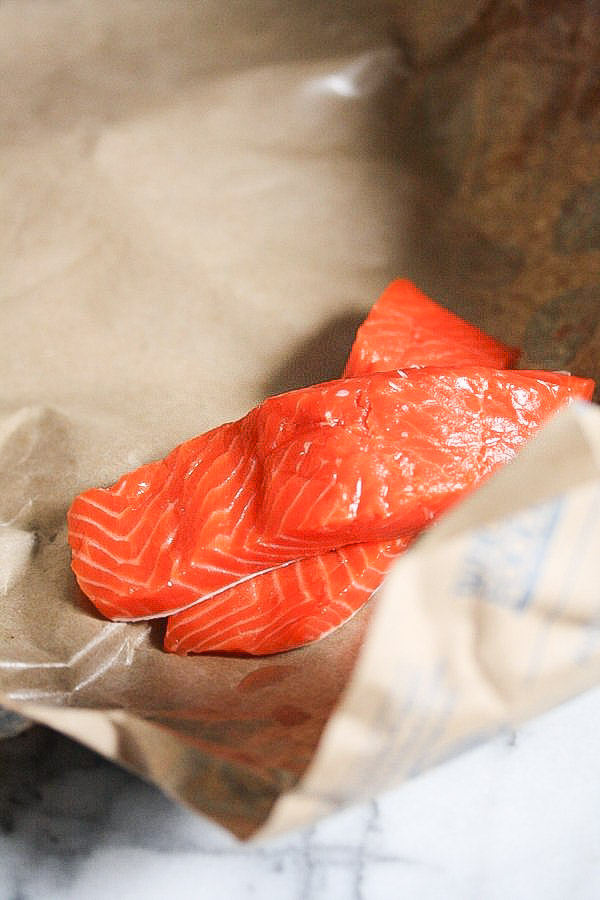
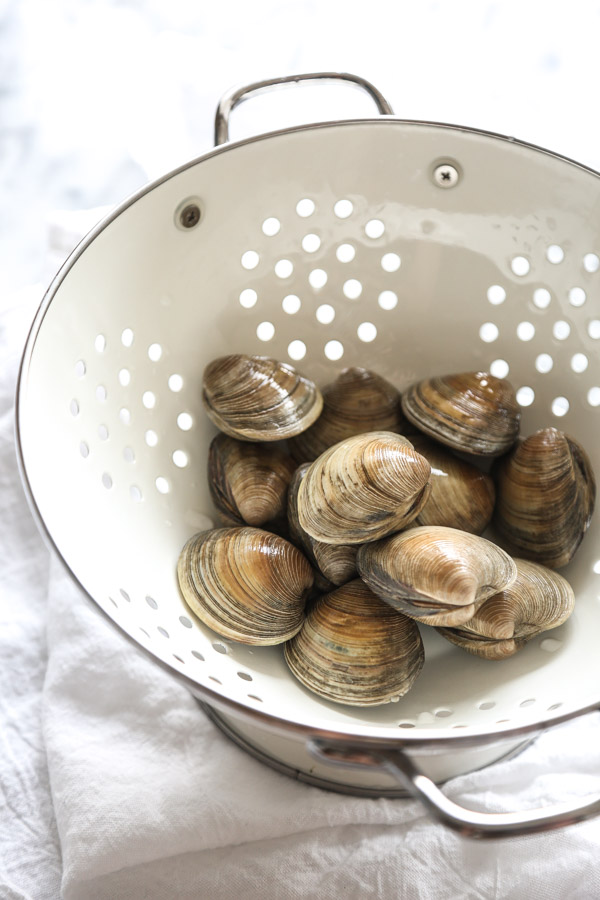

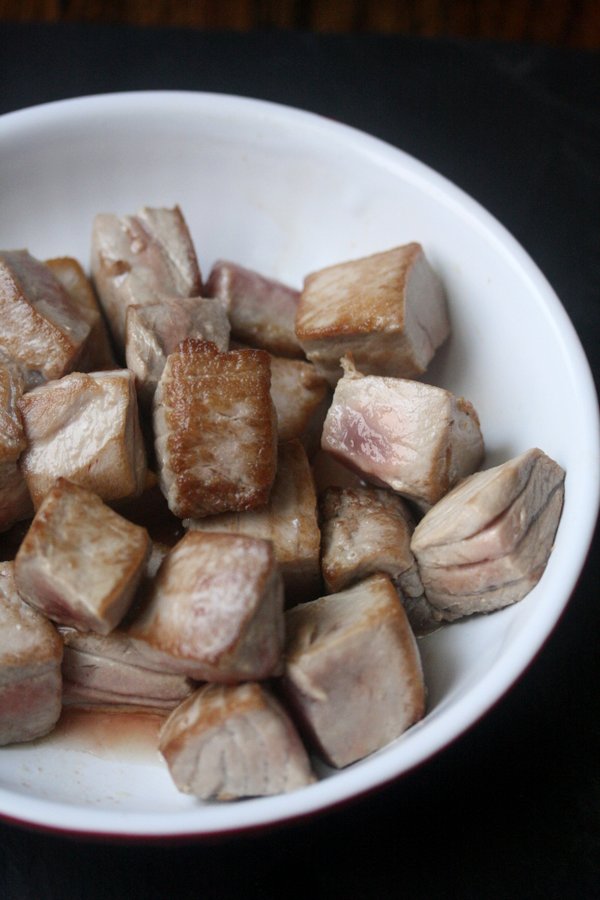
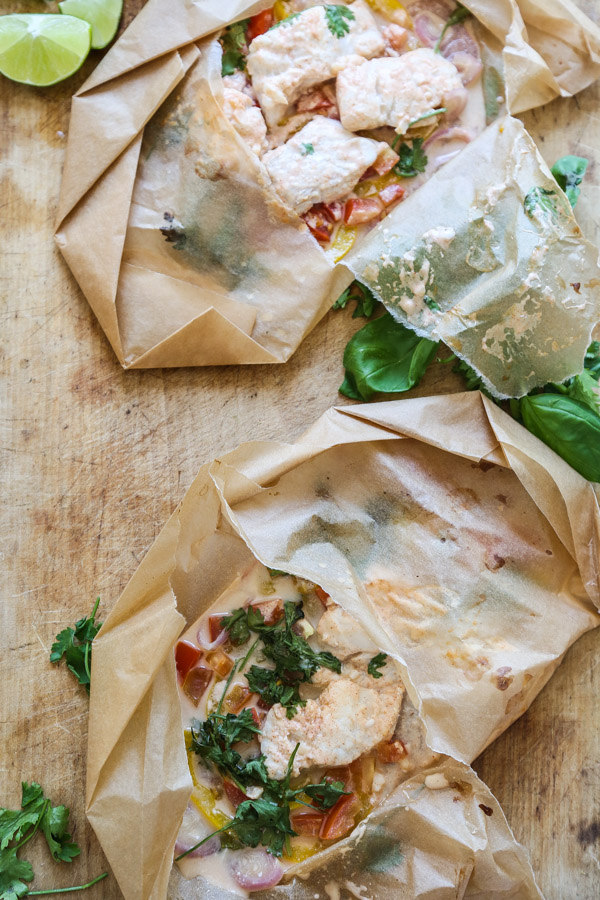
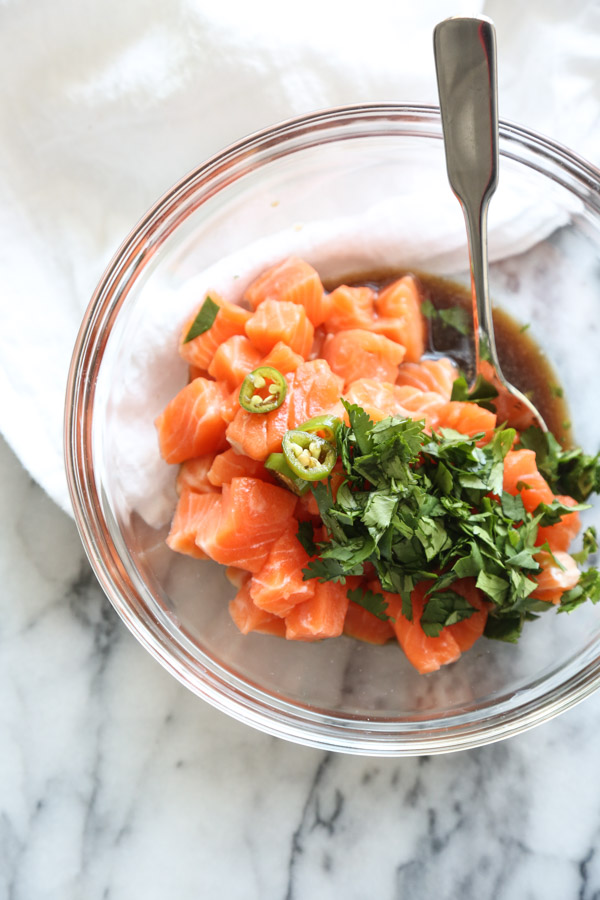

This is so valuable. Like, I always thought catfish was sketchy the way it’s farmed, but now I want to give it a try. Am curious: why are tilefish and bluefish so high in mercury? I thought it was the really big fish (tuna, swordfish, king mackerel) that had the most heavy metals.
Well, Asian catfish definitely is 🙂 But there are wild US sources and also farmed. It’s refreshing to know that US farming practices, at least for seafood, is on the safer side.
I was totally bummed about Bluefish too. I don’t know the exact reason, other than that it’s one of the larger predatory fish in coastal Atlantic waters. I found this interesting article though upon a second google search: http://thinkprogress.org/climate/2015/07/20/3682326/bluefish-mercury-coal-emission-regulations/
I put this in the medium mercury category since I doubt that most people eat more than a few servings a month, unlike Tuna which sushi enthusiasts consume much more of. And I think the omega-3’s and healthy oils are at least a boon to other areas of your health.
Ideas for ling cod and rockfish? We get lots of them here in Oregon.
Hi Christina – how funny – I’m in Oregon as we speak!! Making my way from wine country to the coast. Never cooked with rockfish so will definitely add to the list. For cod, you can use that in a stew like the Marmitako or en Papilliote like my recent Moqueca packets. See those two sections above 🙂
I have many sea bass and scup filets in my freezer — all without skin — from a fishing charter off Martha’s Vineyard this summer!
How long will they stay enjoyable to eat in the freezer, and do you have any recipe ideas?
Your article is a very helpful synopsis of the “fish situation” — so glad I found it!
So glad you found it too Ruth!! I’m very jealous of your MV expedition. In all my years there, I’ve never gone out on a fishing boat! Add it to the bucket list for next summer…
Did you catch striped bass? I assume so since there’s so much of it in the water during the summer months. In which case, I have lots of recipes for you. Search the FMP archives for: Broiled Striped Bass with Provencal Tomatoes; Striped bass ceviche; and you can definitely make the moqueca packets with them too, as well as the scup for that matter.
Scup is thinner and smaller, so I would recommend a pan-fry. You can check out my crispy flounder recipe. It uses millet flour, but you could use regular flour or cornmeal.
They should last for up to 3 months in the freezer, depending on how well they’re packed. At that point freezer burn begins to set in and mess with quality. But it won’t really go “bad.”
Lucky you that you have so many delicious fillets at the ready!
Very belated thank you!
Great account on what’s good to go for and not to go for. in my opinion small fish are underrated and can be quite exciting. The Spanish and Portuguese seem to be quite inventive with them and have very chic tinned fish. Maybe if these type of products were a little more widely available they would grow in popularity. Here is one I like the look of…https://www.thefishsociety.co.uk/shop-by-fish-type/little-tinned-gods/Ortiz-tinned-sardines.html
I like Ortiz sardines too!
Thanks for sharing really loved it.